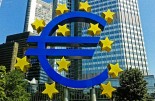Monex Europe: ECB’s rate hikes continue to be 'forcefully' transmitted
Monex Europe: ECB’s rate hikes continue to be 'forcefully' transmitted

The ECB’s Q2 Bank Lending Survey report highlighted that the monetary tightening since summer 2022 continues to be transmitted 'forcefully' to the real economy, as President Lagarde put it in at the past two policy announcements.
The central bank noted in today’s report that the cumulative tightening since the beginning of 2022 has been “substantial”, with a significant weakening in lending dynamics since last Autumn. Specifically in Q2, lending conditions have tightened, although at a slower pace than Q1. The net percentage of banks that reported tighter credit standards for enterprises fell from 27% in Q2 to 14% in Q2, still above the 20-year average of 9%.
Meanwhile, the pace of tightening also slowed for home purchases, from 19% to 8% above an average of 6%, while for consumer credit it accelerated from 10% to 18%, above an average of 5%. The continued above-average pace of credit tightening reflected not only the more restrictive monetary policy stance, but also slowing growth conditions, increased risk aversion by lenders, and reduced demand.
The latter was particularly key as the marquee takeaway from today’s report was that firms’ net demand for loans fell strongly in the second quarter to an all-time low (-42%). This reflected rising rates and slower growth, with demand also waning for long-term loan demand used for fixed investment projects. In Q3, banks expect a further net tightening in credit conditions for both enterprises and consumers, albeit at a further reduced pace, while they expect conditions to remain unchanged for house purchases.
With data showing that the eurozone growth outlook remains bleak, potentially extending the degree to which lending conditions tighten further this year due to the increased credit risk that poses for banks, today’s BLS report adds to a growing case for the ECB to end its tightening cycle with a deposit rate of 3.75%.
In our eyes, there is only one compelling risk that the central bank hikes once more in September and that is the labour market, where the unemployment rate sits at a record low and unit labour costs have risen. However, this only poses the threat of inflation persistence if growth conditions remain robust, which they have shown no signs of doing this year in the eurozone.
As such, it is highly unlikely that firms will be able to carry on passing these higher wage costs onto the final consumer and will instead have to absorb them, compressing historically wide corporate profit margins in the eurozone.
Over time, this should weigh on labour demand and finally wage growth, but whether the Governing Council takes confidence in such dynamics or continues to set policy on lagged indicators will ultimately determine whether one final hike takes place at the end of Q3.
In our view, the accumulation of data so far provides a compelling case for them to take a more cautious stance and this is slowly being reflected in market pricing.
Credit conditions tighten mainly due to the reduced risk tolerance by lenders amid an environment of heightened default risk
For enterprises, the 14% net tightening in credit standards was mainly due to the increased perception of risks from major lenders (13% vs Q1 rate of 27%). Against this backdrop, the tolerance of banks to risks also led to a further net tightening in credit standards. Credit conditions for SMEs (17%) tightened more aggressively compared to large firms (13%), while the same trend was visible within the rejection rates for loans which also ticked up on aggregate from 15% in Q1 to 16% last quarter.
For enterprises, however, the main area of focus was the dramatic decline in loan demand, which on aggregate fell to an all-time low. However, this was primarily driven by reduced loan demand from SMEs (-40%) and long-term loans (-46%).
In comparison, loan demand amongst large firms fell less (-34%), close to the lows recorded during the global financial crisis, while the same can be said for shorter-term loans (-22%). Rising interest rates and declining fixed investment remained the main drivers of the net decrease in loan demand, both on aggregate and for differing sized firms. Lower financing needs for M&A activity, available internal funding from improved corporate profits, and private debt issuance contributed to the lower level of overall loan demand.
Credit conditions for households also tightened further in Q2 (8%), albeit to a lesser degree than in Q1 (19%). The tighter conditions were largely due to banks’ higher perception of risks, driven by concerns regarding borrowers’ creditworthiness, housing market prospects and the general economic outlook. Costs of funds also contributed, while the banks’ liquidity position and access to market financing was broadly neutral for Q2.
In the second quarter, banks generally reported a net increase in the share of rejected applications for housing loans (8%) although to a lesser degree than in Q1 (17%). Out of the four major economies, only Italy saw fewer household loan requests rejected. In terms of demand for household loans, that remained in contractionary territory in Q2 (-47), but is significantly down on Q1 (-72%).
Higher interest rates, weakening housing market prospects, and low consumer confidence all contributed negatively to demand for loans for house purchases. Unsurprisingly, for the fourth consecutive quarter, higher interest rates were the main negative contributor.
In contrast to the slowdown in credit tightening for housing and business loans, the pace of tightening in credit conditions for consumers increased markedly in Q2 from 10% to 18%. This was primarily driven by concerns over consumers’ creditworthiness and the increased perceptions of risks, although higher funding costs and tighter balance sheet conditions also played a role.
Euro area banks reported the same net increase in the share of rejected applications for consumer credit in Q2 as in Q1 (10%). Meanwhile, higher interest rates and lower consumer confidence weighed on the demand for consumer credit, which on aggregate contracted by -12% on net.
Pace of tightening slows alongside ECB’s tightening cycle but is likely to continue even after terminal rates are hit
The tightening in credit conditions generally slowed in the second quarter alongside the ECB’s tightening cycle. However, with the eurozone growth outlook yet to improve and confidence indices remaining on the floor, we expect banks’ perception of credit risk to remain elevated beyond the completion of the ECB’s hiking cycle.
As such, credit conditions on offer to the real economy are likely to continue tightening for the remainder of the year, albeit at a slower pace. This highlights the risks of overtightening policy, a key facet to the argument that will be put on offer by the doves over the summer period. Markets are acutely tuned into these risks, lowering slightly the implied terminal rate for the ECB in response to today’s report.








